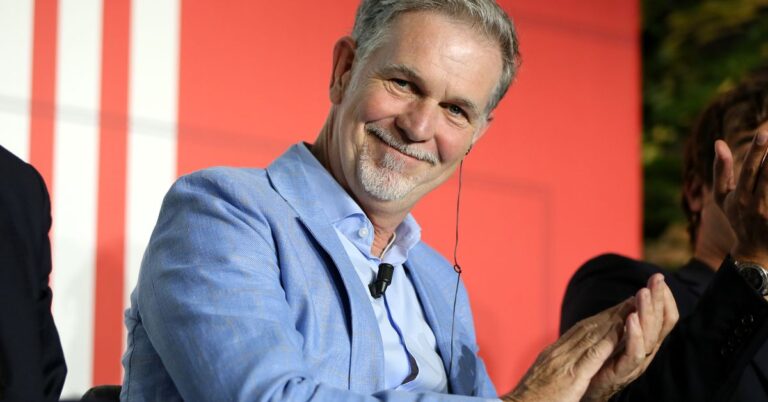
The rise in the popularity of video content isn’t set to decline anytime soon, and with 2.6 billion YouTube users around the world, content creators are reaching limits with videos that written content could never accomplish. But how can you reach more global audiences with your videos? The answer isn’t as simple as creating great content. In fact, the success of your videos relies heavily on whether they’re optimized for a global audience!
Although English is considered one of the most widely-spoken languages on earth, only 1.35 billion out of the estimated 8 billion people on earth are English-speaking. That means that if you produce your videos in just the English language, you’re missing out on the opportunity to target millions of viewers worldwide.
You might think that video script translation is the quick solution here. But optimizing your video to engage global viewers revolves around more than just language. You also need to consider viewers with hearing disabilities.
This post explores the fundamentals of optimizing your videos for a global audience to make them accessible to anyone.
Why Video Content is the Best Way to Reach a Global Audience
Table of Contents
More people watch videos today than ever before. And there’s no sign of the trend declining any time soon. In 2020, more than 80% of global internet usage was driven by video content. On YouTube alone, 1.2 billion videos are watched every single day. The effectiveness of video has been shown to increase consumer trust, increase conversion rates, and keep audiences engaged for longer.
Videos are one of the best ways organizations can maintain consistent global branding, even if they target multiple languages across multiple channels. Pairing video and written content can be a great way to improve the ROI of global campaigns that target specific local markets.
How to Optimize Your Videos for a Global Audience
Step 1: Perform In-Depth Research
To start creating videos that engage a global audience, you must determine where the majority of your viewers are based. Most YouTube users are generally based in Latin America and Asia, which rules out the idea of only using English content when creating video ads. Once you’ve researched the demographics of your target audience, it’s time to focus on cultural preferences across multiple channels, which have a massive impact on the type of audience you’ll have to cater to with your content.
After establishing which cultures you’ll cater to, creating content with a specific persona is important. This will help you create content that aligns with your viewers’ expectations. When you deeply understand who’s listening to you, you’ll have a much better opportunity to discuss the type of content they’re willing to listen to.
Step 2: Focus on Titles, Descriptions, and Captions
Audio-visual content intended for the international market must be delivered in a way that sparks global interest. This doesn’t necessarily only relate to the kind of content you produce but revolves around improving the accessibility of your content with video metadata as well.
You’ll need to optimize your video titles, descriptions, and captions according to the preferences of the local audience. For example, if more than 35% of your viewers are native Spanish speakers, it’s important to translate your original audio content into the Spanish language.
Using translated captions is a great way to improve the accessibility of your audio-visual content, as it ensures that you’re also catering to individuals that cannot listen to the audio of the video. It’s preferable to use professional language service providers when it comes to translating your captions, as machine translation often neglects to capture cultural nuances that are deeply engrained in language.
Step 3: Consider Subtitles
Adding subtitles to your videos is a great way to reach more global audiences if you’re sharing videos outside of YouTube, where auto-captioning isn’t standard practice. Subtitles can be very handy to help viewers understand you better and ensure that viewers that cannot listen to the audio still understand the content of your video. Since subtitles force viewers to engage with the video, it might help drive engagement with your videos as well.
Step 4: Time the Length Perfectly
A major aspect of creating high-impact videos is their length. The perfect video length is important to the product’s effectiveness in reaching a global audience. If your video is intended for international audiences, be brief enough to keep people interested. Dragging the video out for too long can have a negative effect and might lead to increased bounce rates. To maximize viewership, it’s important to do proper market research and balance out the timing to ensure you’re producing videos that are just long enough to deliver a meaningful message.
Step 5: Create Localized Videos to Reach Specific Audiences
Localized video clips can address specific problems people face in specialized regions. Developing local video campaigns is important. You can start by creating a simple video that engages the audience. After this, you can develop a series of short films tailored to specific countries or cultural areas. A good example of localized videos is the content created by the National Institute for Health. Their videos are intended for American English speakers. However, the voice-out and the scripting are all Spanish to demonstrate that NIH has resources available for the languages their target audience understands best.
Ready to Reach More Global Audience Members with Your Videos?
Optimizing your videos to reach more global audience members isn’t rocket science, but there are some basic principles that you must keep in mind to appeal to and engage viewers across the world. When you translate your videos and their text elements, you’re giving your video the best shot at reaching as many viewers as possible, but translation is not the end-all and be-all of building a global reach.
By implementing certain tactics to make your videos easily accessible through search engines and localizing your keywords, titles, and captions, you’ll be catering to a global market and expanding your reach with ease.
Featured Image by Sam McGhee on Unsplash






